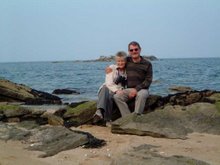The museum is 3 miles from the campsite, and we decided to a
visit on Whitsun Sunday when lots of additional events were taking place.
The museum is an open-air collection of traditional buildings
from all over Hungary, on the same lines as one we had visited in Wales, the
Welsh Folk Museum near Cardiff.
This is an example from the vast range of buildings. It was
helpful that many of the descriptions were in well written English especially
when trying to follow the processes of, for example, a dye works or the types
of carts and carriages used down the ages.
However, it would be fair to say that after a while the
different building styles and regional variations tended to blur together,
which was perhaps inevitable unless you knew a lot about Hungary’s regional
diversities or were prepared to swot up extensively before going.
There were some exceptions, though. This is a recognisably
different, a Tartar yurt that was being erected.
But where does the yurt fit in? The Mongols (or Tartars)
invaded and devastated Hungary in 1241. The following year they retreated due
to the death of their leader, but a few remained. These number today about 6,000
and, whilst happily integrated into Hungary, they have retained their
traditions and Mongolian appearance.
This next photo shows a well-to-do family room. What’s odd
is the floor.
The floor is just beaten earth and seemed to be quite
common, in bedrooms too with gleaming white bed sheets. I couldn’t work out how
the floor did not become a muddy goo when liquids were spilt or wet feet
trailed water in. And how could those sheets stay white.
Now for some of the extra activities. Hungarian dancing featured
for most of the day, in well over 30 degree heat. The violin combo backing gave
a gypsy feel to some of the dances but others could have been Irish reels- and
not a bottle of Guinness in sight. It was all very colourful.
Needlework was another traditional skill featured, producing
patterns like those on the dancers’ outfits. The lady here is wearing such a
pattern, at the same time painting a stitching design on a paper template. Jane
says to notice the beadwork on her hat.
You imagine the needlework is all done by elderly matrons,
but not so, as the next photo demonstrates. I bet he’s a dab hand at cleaning, cooking
and ironing too. Bet the girls are queuing up.
There were many stalls selling traditional products, and we
managed to buy some traditional ice-cream: Magnums. Most welcome in the heat.
Altogether, a good day out, but as with most places visited you only absorb a
small portion of the cultural information presented.
Tomorrow we leave for Poland.







































